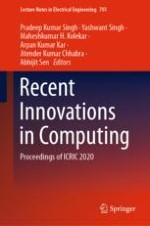2021 | OriginalPaper | Buchkapitel
Design of Reversible Gate-Based Fingerprint Authentication System in Quantum-Dot Cellular Automata for Secure Nanocomputing
verfasst von : Suhaib Ahmed, Soha Maqbool Bhat, Seok-Bum Ko
Erschienen in: Recent Innovations in Computing
Verlag: Springer Singapore
Aktivieren Sie unsere intelligente Suche, um passende Fachinhalte oder Patente zu finden.
Wählen Sie Textabschnitte aus um mit Künstlicher Intelligenz passenden Patente zu finden. powered by
Markieren Sie Textabschnitte, um KI-gestützt weitere passende Inhalte zu finden. powered by
